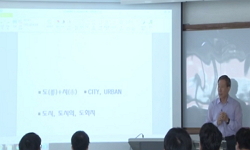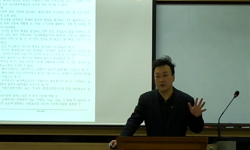중국의 대표적 해항도시 중 하나인 칭다오를 대상으로 독일점령기에서 현재까지의 도시와 항구의 관계 변화를 도시계획 및 도시공간구조와의 관련성 속에서 살펴보고, 이를 비교·분석하�...
http://chineseinput.net/에서 pinyin(병음)방식으로 중국어를 변환할 수 있습니다.
변환된 중국어를 복사하여 사용하시면 됩니다.
- 中文 을 입력하시려면 zhongwen을 입력하시고 space를누르시면됩니다.
- 北京 을 입력하시려면 beijing을 입력하시고 space를 누르시면 됩니다.
https://www.riss.kr/link?id=A100461896
- 저자
- 발행기관
- 학술지명
- 권호사항
-
발행연도
2015
-
작성언어
Korean
-
주제어
해항도시 ; 칭다오 ; 도시계획 ; 항만계획 ; 도시와 항구의 관계 ; Sea Port City ; Qing Dao ; Urban Planning ; Port Planning ; Port-City Interrelationships
-
등재정보
KCI등재후보
-
자료형태
학술저널
-
수록면
115-143(29쪽)
-
KCI 피인용횟수
1
- 제공처
-
0
상세조회 -
0
다운로드
부가정보
국문 초록 (Abstract)
칭다오를 시대의 변화에 따라 크게 4개시기로 구분하여 살펴보면 독일점령기에는 ‘동아시아에의 독일 무역중심지’, 일본점령기에는 ‘자원 수탈 기지, 자본주의 상품의 소비시장’, 건국 초기에는 경제구조의 변화에 발맞추어 ‘현대 산업이 조화롭게 발전하는 종합적인 항구도시, 외향형 다기능 국제성 도시’, 개혁·개방 후에는 ‘지역경제중심도시, 고급 해양과학기술도시, 국제 관광도시, 사회주의 법제도시 및 현대문명 도시’로 변화하고 있다.
칭다오의 도시와 항구의 관계는 4단계로 1단계는 초기 항만도시로서 도시와 항구가 밀착되어 있는 단계이며 2단계는 항만도시가 확장되는 단계로 항구기능과 도시기능이 동시에 성장한다. 3단계는 근대 산업항구도시의 성격을 보이며 4단계에서는 선박의 대형화와 탈산업화로 항구와 도시가 분리되기 시작한다. 따라서 도시와 항구의 관계는 항구의 발전단계를 토대로 새로운 관계를 모색할 필요가 있으며 도시와 항구의 새로운 관계는 항구의 기능변화와 공간적 확대가 다양한 도시기능을 지원함에 따라 도시와 항구의 기능 및 공간적 연계를 통해 서로 밀착하는 방안을 모색해야 한다.
중국의 대표적 해항도시 중 하나인 칭다오를 대상으로 독일점령기에서 현재까지의 도시와 항구의 관계 변화를 도시계획 및 도시공간구조와의 관련성 속에서 살펴보고, 이를 비교·분석하여 향후 칭다오의 발전방향을 제시하고자 했다.
칭다오를 시대의 변화에 따라 크게 4개시기로 구분하여 살펴보면 독일점령기에는 ‘동아시아에의 독일 무역중심지’, 일본점령기에는 ‘자원 수탈 기지, 자본주의 상품의 소비시장’, 건국 초기에는 경제구조의 변화에 발맞추어 ‘현대 산업이 조화롭게 발전하는 종합적인 항구도시, 외향형 다기능 국제성 도시’, 개혁·개방 후에는 ‘지역경제중심도시, 고급 해양과학기술도시, 국제 관광도시, 사회주의 법제도시 및 현대문명 도시’로 변화하고 있다.
칭다오의 도시와 항구의 관계는 4단계로 1단계는 초기 항만도시로서 도시와 항구가 밀착되어 있는 단계이며 2단계는 항만도시가 확장되는 단계로 항구기능과 도시기능이 동시에 성장한다. 3단계는 근대 산업항구도시의 성격을 보이며 4단계에서는 선박의 대형화와 탈산업화로 항구와 도시가 분리되기 시작한다. 따라서 도시와 항구의 관계는 항구의 발전단계를 토대로 새로운 관계를 모색할 필요가 있으며 도시와 항구의 새로운 관계는 항구의 기능변화와 공간적 확대가 다양한 도시기능을 지원함에 따라 도시와 항구의 기능 및 공간적 연계를 통해 서로 밀착하는 방안을 모색해야 한다.
다국어 초록 (Multilingual Abstract)
The classification of Qing Dao"s urbanism into the four times shows the characterizations as follows. ⑴ In German occupation, Qing Dao was ‘the German entrepot in East Asia’; ⑵ in Japanese occupation, it was ‘the base for the resource exploitation and the consumer market for the capitalist commodities’; ⑶ in the early days of the People"s Republic of China, it was ‘the multiple port city and outward diversified and international city in where modern industries had been developed with harmony’ corresponding the transition of the economic structures; ⑷ after the China"s reform and opening up, it has been transformed into ‘the central city of regional economy, the high grade maritime scientific technological city, the international tourist city, and the socialist legislation and civilization city.’
In this evolution, the port-city interrelationships of Qing Dao has been progressed by the four stages. In the first stage when it was the early port city, its city and port connected closely each other. In the second stage, it had been extend growing up simultaneously its port and urban functions. The third stage showed its characteristic as the modern industrial port-city. In the fourth stage and now, its port has been separated from the city due to the ultra large containership and the post-industrialization. Thus, it"s time to seek the new relation between port and city on the basis of the past stages for Qing Dao. It need to find out how its port and city would connected more closely supporting the multiple urban functions according to the changes of port-function and the extension of urban space.
This article aims to examine the evolution of the relations between port and city in Qing Dao, a main port-city of China, from the German occupation of it to the present, and advance its development directions from now on by their comparison and analy...
This article aims to examine the evolution of the relations between port and city in Qing Dao, a main port-city of China, from the German occupation of it to the present, and advance its development directions from now on by their comparison and analysis.
The classification of Qing Dao"s urbanism into the four times shows the characterizations as follows. ⑴ In German occupation, Qing Dao was ‘the German entrepot in East Asia’; ⑵ in Japanese occupation, it was ‘the base for the resource exploitation and the consumer market for the capitalist commodities’; ⑶ in the early days of the People"s Republic of China, it was ‘the multiple port city and outward diversified and international city in where modern industries had been developed with harmony’ corresponding the transition of the economic structures; ⑷ after the China"s reform and opening up, it has been transformed into ‘the central city of regional economy, the high grade maritime scientific technological city, the international tourist city, and the socialist legislation and civilization city.’
In this evolution, the port-city interrelationships of Qing Dao has been progressed by the four stages. In the first stage when it was the early port city, its city and port connected closely each other. In the second stage, it had been extend growing up simultaneously its port and urban functions. The third stage showed its characteristic as the modern industrial port-city. In the fourth stage and now, its port has been separated from the city due to the ultra large containership and the post-industrialization. Thus, it"s time to seek the new relation between port and city on the basis of the past stages for Qing Dao. It need to find out how its port and city would connected more closely supporting the multiple urban functions according to the changes of port-function and the extension of urban space.
목차 (Table of Contents)
- Ⅰ. 서론
- Ⅱ. 칭다오 도시공간의 변화
- Ⅲ. 칭다오 항구공간의 변화
- Ⅳ. 칭다오의 도시와 항구의 관계 변천
- Ⅴ. 결론
- Ⅰ. 서론
- Ⅱ. 칭다오 도시공간의 변화
- Ⅲ. 칭다오 항구공간의 변화
- Ⅳ. 칭다오의 도시와 항구의 관계 변천
- Ⅴ. 결론
- 참고문헌
- 국문초록
- Abstract
참고문헌 (Reference)
1 이한석, "항만과 도시" 블루앤노트 201-205, 2013
2 이한석, "항만과 도시" 블루앤노트 32-35, 2013
3 이한석, "항구도시 칭다오의 식민지 시대 도시변천과 근대건축형성에 관한 연구" 한국항해항만학회 34 (34): 355-365, 2010
4 김춘식, "제국주의 공간과 융합 -독일제국의 중국식민지 도시건설계획과 건축을 중심으로" 한국독일사학회 (19) : 111-144, 2010
5 W. G. 비즐리, "일본근현대사" 을유문화사 1996
6 庄文强, "青岛近代城市规划研究" 东南大学出版社 2001
7 青岛市统计局, "青岛统计年鉴2010" 中国统计出版社 2010
8 "青岛港"
9 鄭春發, "青岛海洋城市的發展機制之研究" 39 (39): 1-40, 1997
10 青岛档案馆, "青岛开埠十七年" 中国档案出版社 2007
1 이한석, "항만과 도시" 블루앤노트 201-205, 2013
2 이한석, "항만과 도시" 블루앤노트 32-35, 2013
3 이한석, "항구도시 칭다오의 식민지 시대 도시변천과 근대건축형성에 관한 연구" 한국항해항만학회 34 (34): 355-365, 2010
4 김춘식, "제국주의 공간과 융합 -독일제국의 중국식민지 도시건설계획과 건축을 중심으로" 한국독일사학회 (19) : 111-144, 2010
5 W. G. 비즐리, "일본근현대사" 을유문화사 1996
6 庄文强, "青岛近代城市规划研究" 东南大学出版社 2001
7 青岛市统计局, "青岛统计年鉴2010" 中国统计出版社 2010
8 "青岛港"
9 鄭春發, "青岛海洋城市的發展機制之研究" 39 (39): 1-40, 1997
10 青岛档案馆, "青岛开埠十七年" 中国档案出版社 2007
11 青岛史志办公室, "青岛市志·城市规划建筑志" 新华社出版 1999
12 靑島市檔案館, "青岛地图通鉴" 山東省地圖出版社 2002
13 青岛档案馆, "青岛史志-海港志" 中国档案出版社 1998
14 青岛档案馆, "青岛史志-城市规划建筑志" 中国档案出版社 1998
15 青岛历史建筑编委会, "青岛历史建筑1891-1949" 青岛出版社 2004
16 靑島市檔案館, "靑島城市歷史讀本(1891-1949)" 靑島出版社 2013
17 約爾克, "靑島城市與軍事要塞建設硏究(1897-1914)" 靑島出版社 2011
18 康存, "靑島120年" 靑島出版社 2011
19 托尔斯滕, "近代青岛的城市规划与建设" 东南大学出版社 2006
20 ヴォルフガングバウワー, "植民都市靑島1914-1931" 昭和堂 2007
21 王伟强, "日本占领青岛时期的都市计划研究" 北京大学 2002
22 .孙瑞琴, "德国外交文件有关中国交涉史料选择 第1卷" 商务印书馆 1960
23 李东泉, "从德国近代历史进程论青岛规划建设的主导思想" (1) : 2006
24 Hoyle, B., "Global and Local Change on the Port-City Waterfront" 90 (90): 395-417, 2000
동일학술지(권/호) 다른 논문
-
- 한국해양대학교 국제해양문제연구소
- 유병호(劉秉虎)
- 2015
- KCI등재후보
-
- 한국해양대학교 국제해양문제연구소
- 히구치 다이스케(?口大祐)
- 2015
- KCI등재후보
-
- 한국해양대학교 국제해양문제연구소
- 리웨이(李偉)
- 2015
- KCI등재후보
-
- 한국해양대학교 국제해양문제연구소
- 우양호(Woo, Yang-Ho)
- 2015
- KCI등재후보
분석정보
인용정보 인용지수 설명보기
학술지 이력
| 연월일 | 이력구분 | 이력상세 | 등재구분 |
|---|---|---|---|
| 2023 | 평가예정 | 재인증평가 신청대상 (재인증) | |
| 2020-01-01 | 평가 | 등재학술지 선정 (재인증) |  |
| 2019-12-01 | 평가 | 등재후보로 하락 (계속평가) |  |
| 2016-01-01 | 평가 | 등재학술지 선정 (계속평가) |  |
| 2014-01-01 | 평가 | 등재후보학술지 선정 (신규평가) |  |
학술지 인용정보
| 기준연도 | WOS-KCI 통합IF(2년) | KCIF(2년) | KCIF(3년) |
|---|---|---|---|
| 2016 | 0.5 | 0.5 | 0.41 |
| KCIF(4년) | KCIF(5년) | 중심성지수(3년) | 즉시성지수 |
| 0.38 | 0.35 | 0.629 | 0 |





 KCI
KCI DBpia
DBpia






